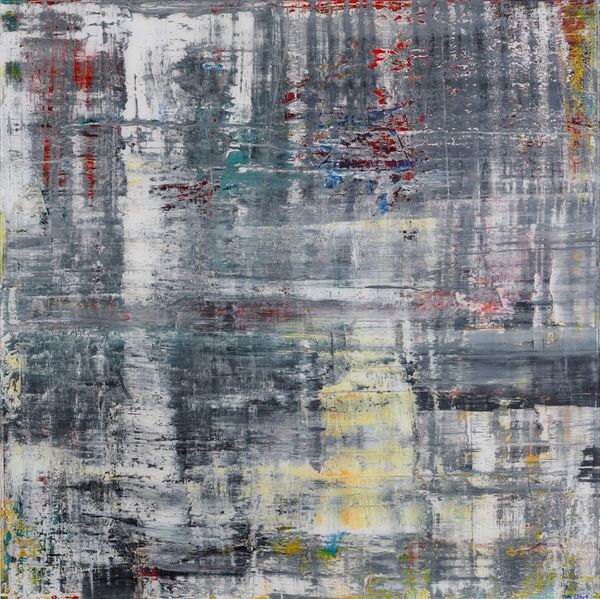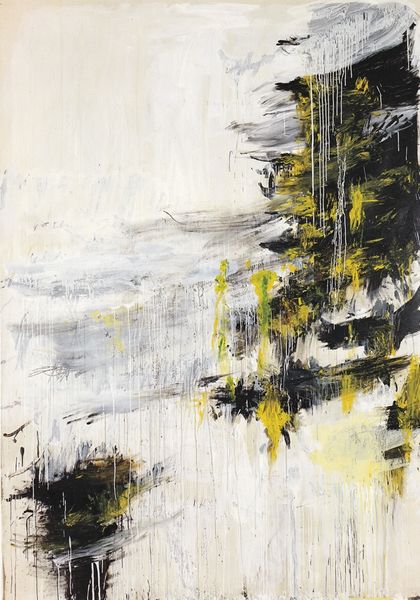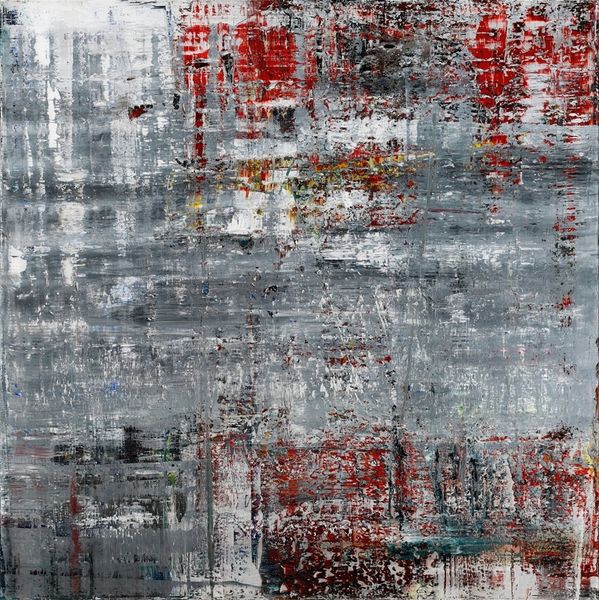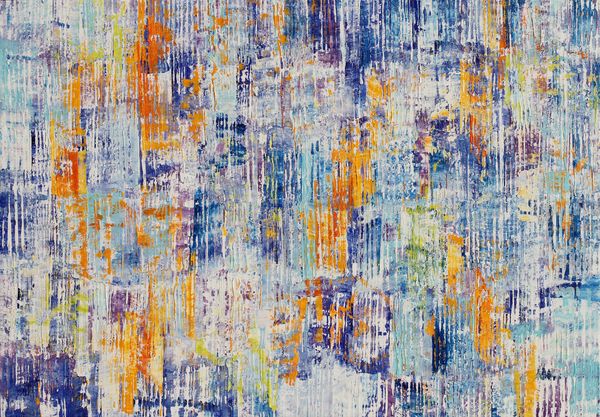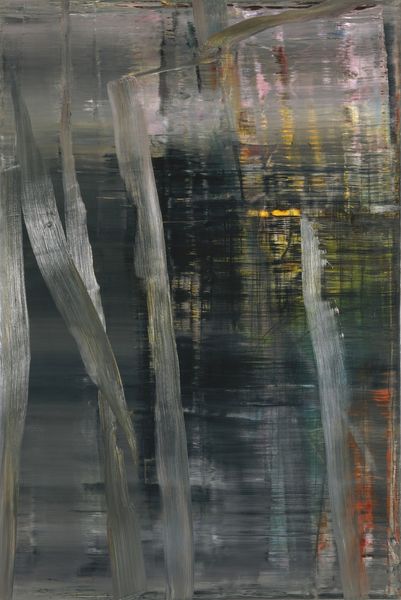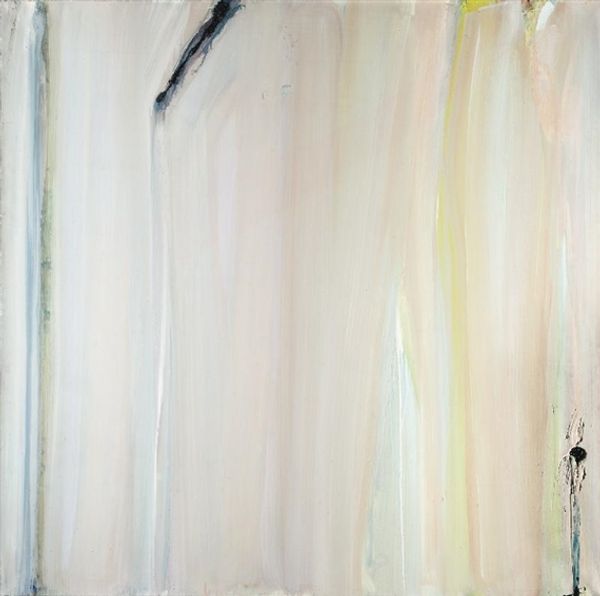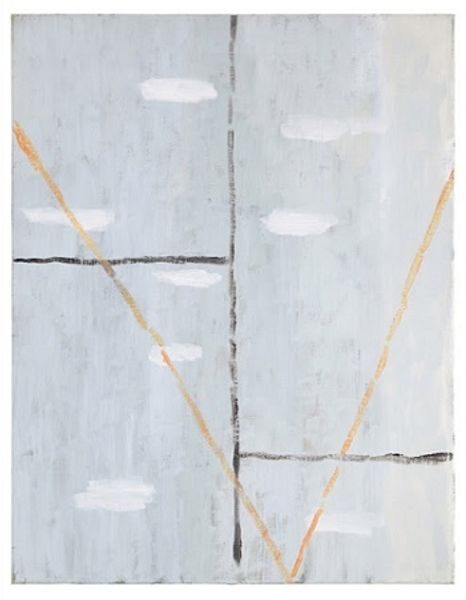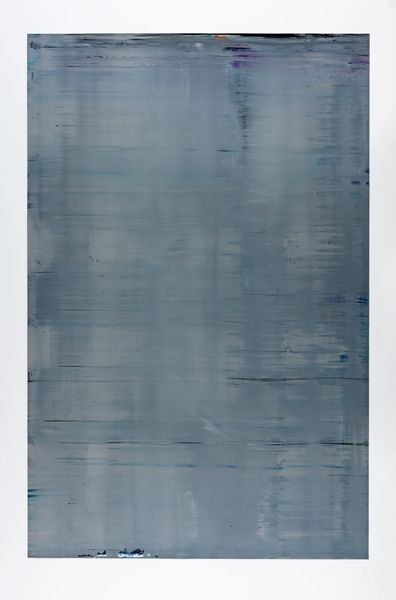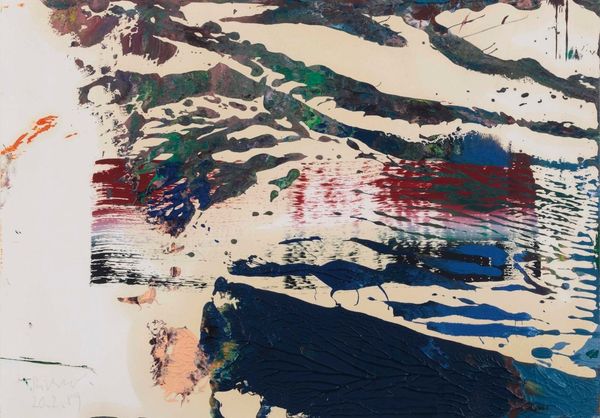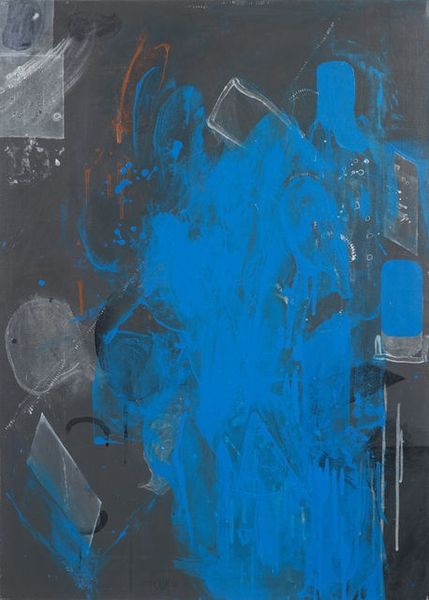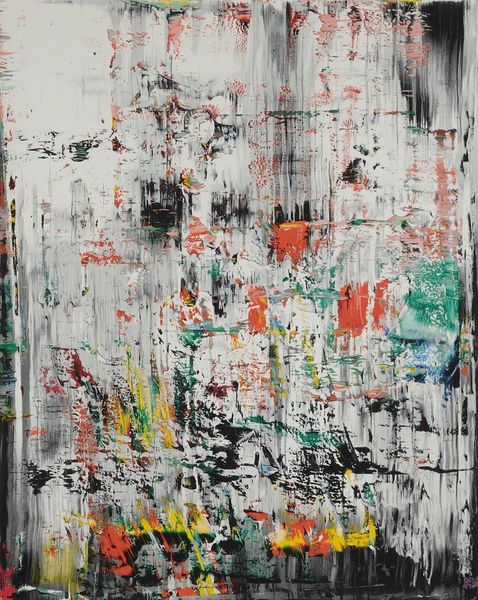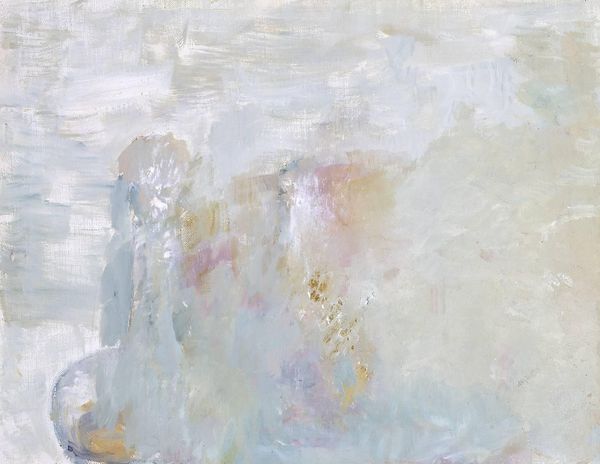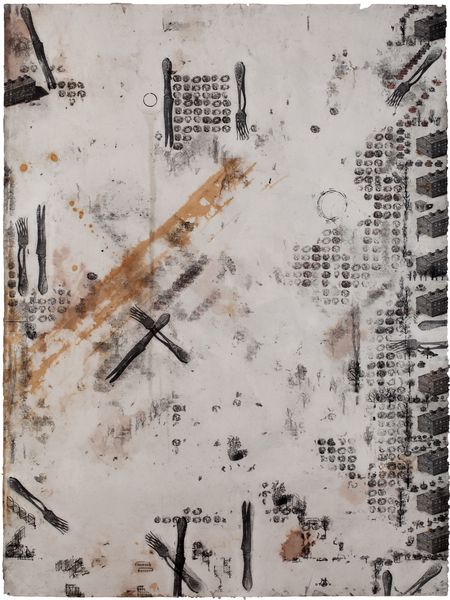
Dimensions: 110 x 160 cm
Copyright: Bernd Luz,Fair Use
Curator: Standing before us is Bernd Luz’s 2014 acrylic on canvas creation, "Metamorphosis II." It's a captivating work, deeply rooted in the tenants of abstract expressionism and modernist lines. What are your first impressions of it? Editor: My first reaction is one of controlled chaos, almost like a deconstructed cityscape in monochrome, sporadically disrupted by these vivid streams of blue and grey paint. It strikes a certain raw, unfiltered tone. Curator: Indeed. You know, "Metamorphosis II" is compelling, considering its underpinnings in abstract expressionism, an artistic movement born from the need to process post-war anxieties. The artist employs layering and a visible underpainting. Editor: Right, I'm seeing it as an exploration of internal change through fragmentation. The recurring block-like shapes maybe symbolic of rigid societal structures slowly crumbling apart or morphing into something new. The dripped paint brings to mind ideas of change, flow, and resisting fixed forms of interpretation. Curator: Certainly. This piece engages a push and pull dynamic. It almost asks, ‘what does the idea of imposed and ever shifting societal structure mean’? Editor: What’s compelling, as well, is how Luz juxtaposes these harsher strokes and seemingly spontaneous drips of color. I think these drips are integral – speaking volumes about how societal norms and systems, even seemingly solid ones, are prone to cracking or seepage of marginalized realities that they strive to exclude. Curator: Absolutely. The scale and the very directness with which Luz approaches the canvas is itself a reflection on the movement's rejection of academic tradition and its valorization of authenticity of emotion above everything else. The lack of recognizable figures serves as a kind of intentional inclusivity. The lack of representation allows for open ended interpretations. Editor: It's a powerful work when viewed through the lens of social critique. It feels like a quiet revolt, dismantling established visual narratives to create space for new ways of seeing and understanding. I believe many artists working with this method want to force conversations. Curator: Absolutely, it invites reflection not only on the canvas but on our world and structures we've built and abide to. Editor: For me, considering the history and knowing where those origins begin, that is precisely where the piece resonates. Curator: I think you are spot-on, which invites us to revisit and redefine what abstraction means today.
Comments
No comments
Be the first to comment and join the conversation on the ultimate creative platform.
